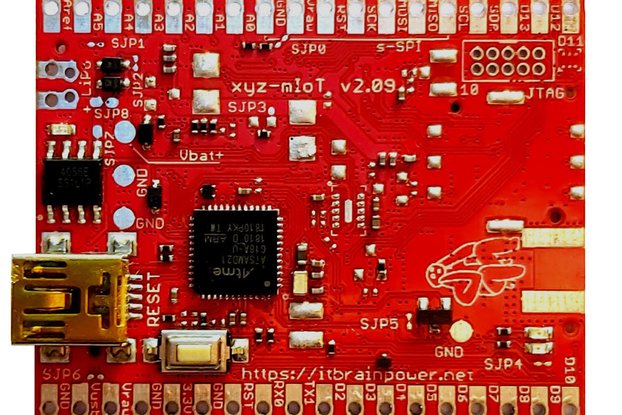Nanosleeper is an ultra-low power development board with real-time-clock wakeup from <100nA deep sleep
Designed by Energy Labs in United States of America
Buy with confidence.
Our Tindie Guarantee protects your purchase from fraud. Learn More
Really need to extend the battery life of your project? Looking to use energy harvesting in your project, and only have a little power? Is your project going somewhere that replacing a battery is dif…
Read More…Really need to extend the battery life of your project?
Looking to use energy harvesting in your project, and only have a little power?
Is your project going somewhere that replacing a battery is difficult?
Choose Nanosleeper as your STM32 development board, and get deep sleep power of <0.25uW! How low is that? Well, from a standard 220 mAh CR2032 coin cell battery, Nanosleeper at <100nA could operate in its low power mode for more than 250 years! Of course, the battery won't last that long by itself, but Nanosleeper enables effectively free sleep for your project.
Nanosleeper uses the STMicro STM32L412 microcontroller, which can enter shutdown mode with 18nA consumption and GPIO wakeup. The extreme low power Micro Crystal RV-3028-C7 RTC keeps time at 45nA (and 1ppm accuracy), and provides an interrupt to the microcontroller to wake it up. The Texas Instruments TPS7A02 regulator provides the 1.8V system voltage while requiring only 25nA of quiescent current.
Nanosleeper uses a "Feather-ish" design - it shares the Feather physical form factor and many of the pins, but is not logic level or pin compatible with the Feather specification.
One neat feature that Nanosleeper has is externally switched power, connected to one of the I2C channels (the I2C SDA and SCL lines are pulled up to switched power). Because of this, any external I2C sensor which supports 1.8V voltage levels can be connected to the switched power and I2C pins, and can be completely disconnected from the power in Nanosleeper's deep sleep mode. Many sensors have sleep modes, but those may easily require more than 100X more power than Nanosleeper does.
NOTE: Nanosleeper is shipped with pin headers included, but NOT soldered.
NOTE: Nanosleeper has a USB Micro connector, but does NOT support USB communication. It operates at 1.8V, and at that voltage the microcontroller does not support USB communication. It can be powered from this USB port however.
How do I learn more?
More information about Nanosleeper, including the schematic and build logs are available on my Hackaday.io project page. MIT licensed example firmware is available on my Github. You can also learn more about Nanosleeper in the Hackster.io article written about it!
No country selected, please select your country to see shipping options.
No rates are available for shipping to .
Enter your email address if you'd like to be notified when Nanosleeper - <100nA Ultra Low Power Dev Board can be shipped to you:
Thanks! We'll let you know when the seller adds shipping rates for your country.
| Shipping Rate | Tracked | Ships From | First Item | Additional Items |
|---|---|---|---|---|
|
:
|
Buy with confidence.
Our Tindie Guarantee protects your purchase from fraud. Learn More

$115.00
Free Shipping!

$17.00
Free Shipping!

$34.99
Free Shipping!

$18.69
Free Shipping!
By clicking Register, you confirm that you accept our Terms & Conditions
We recognize our top users by making them a Tindarian. Tindarians have access to secret & unreleased features.
We look for the most active & best members of the Tindie community, and invite them to join. There isn't a selection process or form to fill out. The only way to become a Tindarian is by being a nice & active member of the Tindie community!
